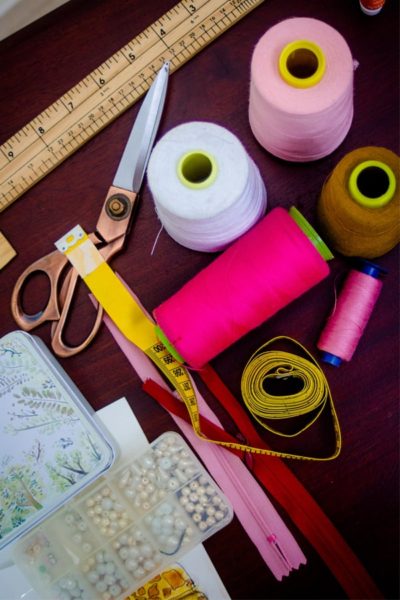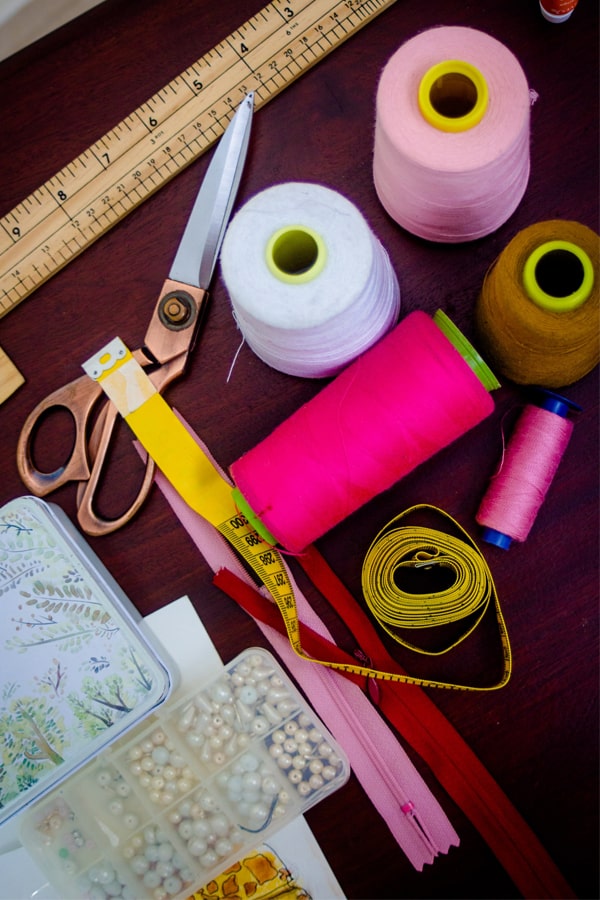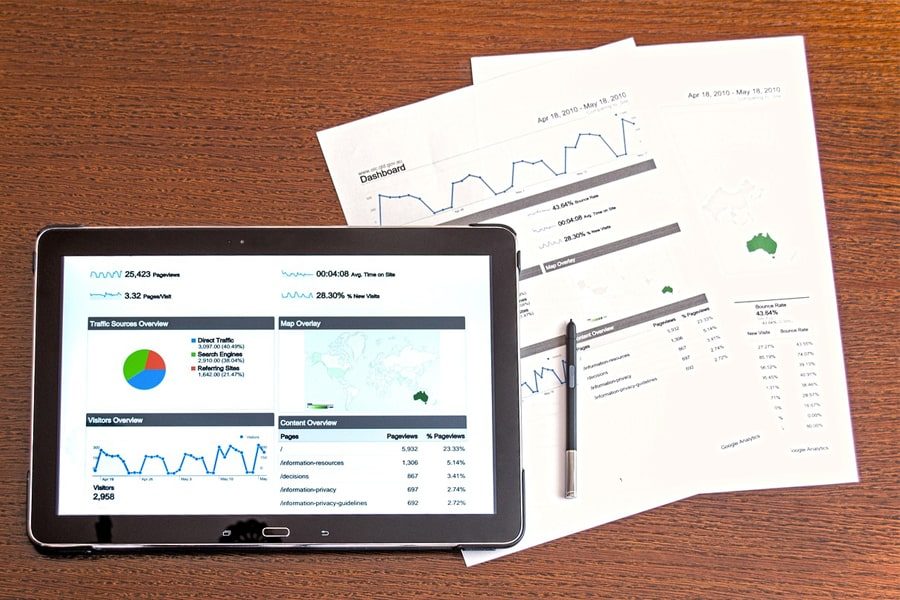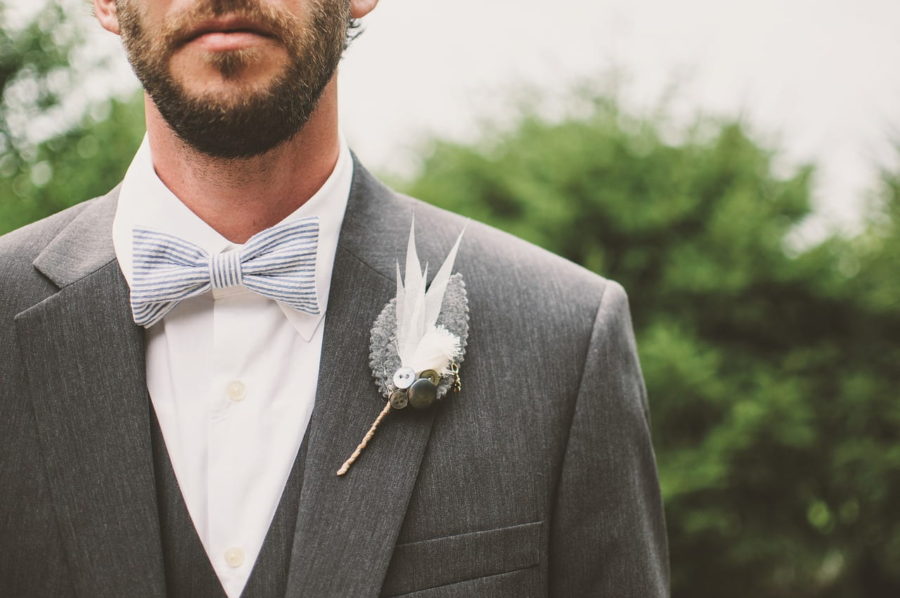
Sewing is one of the most fundamental skills that everyone should have. You never know when you’ll get a rip in your cloth, a button pop, bursted seams, or anything else, and it always happens when you least expect it. To begin with, you won’t be able to sew at its best unless you have the right tools. For a beginner, there are so many different sewing supplies that it can be overwhelming to pinpoint the essential ones. While some sewing tools are required, others are optional and can be purchased later. So, before you go out and buy all of the new, flashy sewing accessories, make sure you have these basic sewing tools and equipment, plus know how to use them properly! These items will assist you in getting started, completing sewing lessons, and completing your sewing projects.
What A Beginner Needs for Sewing?
If you’ve ever wandered through different aisles of a sewing or craft store, you’ve seen a wide range of sewing tools, from the most basic to the most advanced. We know that’s enough to make a novice nervous! So, to help you deal with these sewing tools and understand what they do, we’ve compiled a list of 8 sewing tools and equipment that any beginner should look into before heading to a craft store or ordering them online.
- Fabric Marking Pen or Chalk
- Hand Sewing Needles
- Pins, Pin Holder and Clips
- Seam Ripper
- Sewing Scissors
- Tape Measure
- Thimbles
- Threads
There’s no need to become stressed by all of the new information. Instead, let’s look at some sewing tools and how they’re used, starting from fabric marking pen or chalk. Also, once you’ve finished the list, we’ve added a sewing kit that includes the majority of these essential basic sewing tools and equipment, which you can purchase all at once to save time looking for each item individually.
1. Fabric Marking Pen or Chalk | Basic Sewing Tools and Equipment
Sometimes, to transfer stitch lines, darts, seams, and other markings from your pattern to your fabric, you may need to make a mark on. There are a few options, depending on the fabric and the project you’re working on. Tailor’s chalk is inexpensive. They are available in a variety of colors and as a pencil or chip with tapered edges. Before you start marking your pieces, try it out on your fabric. When you rub it with your finger, it should disappear. If the mark remains, make sure to only mark the fabric’s wrong side or use tailor’s tacks. You can also use disappearing ink pens, which evaporate after a specified period of time or can be removed with a damp cloth. This one should be tested first on your fabric, especially silk.
2. Hand Sewing Needles | Basic Sewing Tools and Equipment
Hand sewing needles are available in a variety of sizes and points. The smaller the needle, the larger the size number on most needles. Sharps are the most commonly used hand sewing needles. Sharps are medium in length in comparison to other needles, have a rounded thread eye, and can be used on almost any fabric.
To save yourself some distress, try to use the needle that is best for the project. You don’t want to use a needle that’s too small to hand sew heavy fabrics like denim or chenille. For those type of thick or difficult-to-sew fibers, use heavy needles. On fine or delicate fabrics like chiffon, satin and cotton etc., use finer needles. As a result, having needles of various lengths and sizes is preferable. You can find a variety of needles like embroidery needles, upholstery needles, quilting needles, doll needles, and other specific hand sewing needles to suit your work in both online and local stores.
3. Pins, Pin Holder and Clips | Basic Sewing Tools and Equipment
Pins
Do you ever get irked when your fabric wiggles while you’re trying to sew? Most of us are. But, pins are the way to go and experience smooth sewing. Sewing pins come in handy for a variety of reasons, including holding fabric pieces in place while sewing with woven fabrics, sewing with a seam, sewing with knits, attaching pattern pieces to fabric, fitting fabric on the body, and attaching layers of fabric together etc.
Sewing pins come in a variety of styles and sizes, and each one serves a specific purpose. In general, delicate fabrics should be pinned with a fine, shorter pin, while heavy fabrics or thick layers should be pinned with a wider, longer pin. If you’re not sure which pins to use, look at the packaging to see what fabrics they’re designed for. However, you only need regular straight pins as a beginner. As your sewing skills improve, you can add more types to your collection.
Pin Holder
Although most pins come with a simple plastic case, a magnetic pin tray, pincushion, or other pin-holding device may be useful. That’s because keeping them in the plastic box they came in is like waving for disasters. A pin cushion keeps your pins from scattering if you knock them over and it’s easy to find a pin on a cushion when compared to a plastic case or box. Also, magnetic pin cushions are available on the market, but a simple tomato pin cushion will do the trick a s well. The bottom line is – I f you have pins, however, you’ll need a pin cushion NOT a plastic case or box.
Clips
Any sewing kit would benefit from having these small tools. They keep fabric in place without pricking you while you work, unlike pins. Sewing clips are there to prevent wrinkling and permanent holes in both thick and thin, delicate fabric layers. Their flat backs also make it easy to feed fabric under the foot of a sewing machine.
4. Seam Ripper | Basic Sewing Tools and Equipment
A seam ripper does precisely what it says. It rips! Why would anyone want to rip a seam, though? A seam ripper is a must-have sewing supply because we all make mistakes and need to undo stitches. Need to remove stitches without damaging the fabric? open stitched buttonholes? or remove buttons and snaps? Answer is a seam ripper. A seam ripper’s fine tip can be used to pick out single threads, while the rounded tip can be used to remove stitches along an entire seam without tearing the fabric. Spend some time learning how to use your seam ripper so you’ll be prepared when a sewing mistake happens. It is an essential item to have in your sewing toolbox, and fortunately many beginner sewing kits and machines include one.
5. Sewing Scissors | Basic Sewing Tools and Equipment
A pair of sharp and convenient scissors is essential for any sewer who wants to cut through fabric without having jagged edges. As a result, it’s absolutely necessary to invest in a high-quality pair of fabric scissors so that you can complete your sewing task quickly and comfortably.
But that’s not all; these must be kept separate from all other scissors because if they’re used to cut paper, they’ll quickly dull. Also, if your scissors are dull, they may cause problems with your fabric. You’ll notice how badly all-purpose scissors cut fabric when compared to sewing scissors if you try it. So, you’ll need a good quality pair of scissors that are solely for cutting fabric. But it’ll be worth it because choosing high-quality scissors will have a significant impact on the quality of your cuts and how comfortable your hand feels after hours of cutting.
There are also small embroidery scissors that are designed for embroidery but can also be used for hand stitching and can be considered great thread clippers. You can always take them with you on the go thanks to their ideal size. As a beginner sewer, you may need to keep your sewing supplies – specially the pair of scissors – hidden from family members who will grab those scissors and use them to cut everything in sight.
6. Tape Measure | Basic Sewing Tools and Equipment
You’ll need to take precise measurements when sewing garments or doing some DIY projects. Most of your sewing needs can be met with a ruler, but taking measurements with a tape measure is much more convenient. Because they’re perfect for getting measurements on non-flat surfaces, which you’ll need to measure your model. After all, it’s not practical to use a ruler to measure items with volume and curves, such as the human form or areas with bends.
Therefore, one of the most essential sewing supplies to keep in your sewing tool organizer is a tape measure. A metal retractable tape measure is less flexible than a plastic tape measure, but it is longer and can be used to measure large objects. A regular measuring tape and a retractable measuring tape are both recommended because they come in handy in different scenarios and are inexpensive. In addition, to avoid having to convert units of measurement, make sure your tape measure has both inches and centimeters.
7. Thimbles | Basic Sewing Tools and Equipment
Beginner sewers will find that this most common sewing tool to be their best friend and a lifelong sewing companion. Thimbles help push needles through multiple layers of fabric and most importantly protect finger ends from needle points when hand sewing. These nifty tools come in a few different sizes. This metal bucket is there to help you to keep your finger safe while pushing a needle through layers of fabric. There are also leather versions if you find metal ones too uncomfortable. Plus, these nifty tools come in a few different sizes too. You only need a basic thimble, but if you want to go for it, there are fancy thimbles with stones that look like jewelry, which would make a great gift for your sewing-obsessed girlfriend, sister, or mother.
8. Threads | Basic Sewing Tools and Equipment
Sewing requires the use of threads – well, you clearly can’t sew anything without it. Although there are many different types of thread, a sewing beginner only needs a small collection of general-purpose threads. Silk, polyester, and cotton thread are just a few examples of thread types. Thread is available in almost any color you can think of. So don’t forget to stock up on spools of various colored threads before beginning your sewing projects. A spool of invisible thread is also a good investment. Invisible thread is the solution if you need to sew something white, beige or yellow but don’t have any matching thread. To avoid stitching issues, thread breaking, and lint build-up, always use high-quality sewing thread.
Marcoon Sewing kit
Marcoon Sewing kit has been named The Best Overall Sewing Project Kit – 2021 by DWYM (Don’t Waste Your Money) Crafts & Art Supplies Experts, as well as user reviews from Amazon. Clothing repair, dress alterations, sewing upholstery, quilting, knitting, embroidering, crocheting, needlework, and more can all be done with this handy kit. This sewing kit is ideal for adults, children, college students, beginners, and travelers. The kit can be used for a variety of purposes, including home, DIY, hobby, emergency, and so on. The Marcoon Sewing Kit is exactly what you need. Its small, portable kit contains all of the high-quality sewing supplies you’ll need. It’s not just for you; but it’s also a wonderful present for your loved ones. It’s a one-of-a-kind and extraordinary gift, one that’s not only useful and simple to use, but also thoughtful.
Things in Marcoon Sewing Kit
This sewing kit can be your constant companion and comes with all of the tools needed for hand sewing without the use of a machine, including the following,
| Small Size Package | Large Size Package |
| 1 Knitting Needle 1 Measuring Tape 1 Plastic Needle Threader 1 Seam Ripper 1 Stainless Steel Scissors 1 Storage Bag 1 Sweater Needle 1 Thimble 10 Pins 12 Different Color Thread 30 Assorted Hand Sewing Needles 5 Safety Pins 6 Spare Buttons 8 Color Pins | 1 Classic Pumpkin Pin Cushion 1 Crochet Hook (3.5mm) 1 Easy Pull Threader 1 Fabric Pencil 1 Knitting Needle 1 Large Stainless Steel Scissors 1 Magnifying Glass 1 Plastic Needle Threader 1 Pu Leather Case 1 Retractable Tape Measure 1 Seam Ripper 1 Soft Tape Measure 1 Storage Bag 10 Large Eye Needles 10 Safety Pins 2 Thimbles 20 Spare Buttons 3 Sewing Clips 30 Assorted Hand Sewing Needles 38 Xl Thread Reels (100m with Plastic Cylinder) 4 Plastic Bobbins 40 Color Pins 5 Metal Snap Buttons 9 Locking Stitch Markers |
Conclusion
“I think handwork is a way to cope when times are stressful,” says quilt designer and author Becky Goldsmith. “It can get you out of your head and give you something beautiful to look at, and it can help you make progress on a project when nothing else is going on.” This could explain why hand sewing has become more popular during this pandemic year. Kits, online tutorials, books and more have entered the sewing world.
We hope that having and knowing how to use these set of sewing tools and equipment will enhance your confidence in beginning to sew on your own. For starters, you can work on some simple beginner sewing projects before trying to patch up your favorite summer outfit, or jeans. All you have to do is try focusing on this old tradition of pulling a needle and thread through cloth with your fingers, one stitch at a time. Remember that no one ever got it right on the first try, so keep trying until you do! Good luck!



